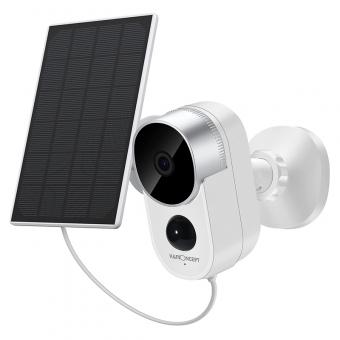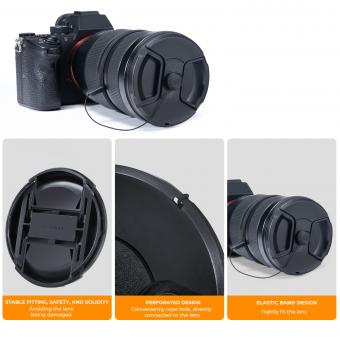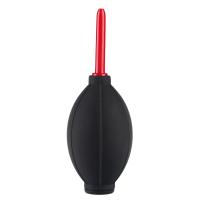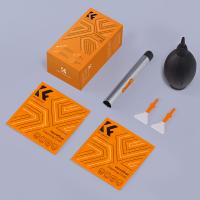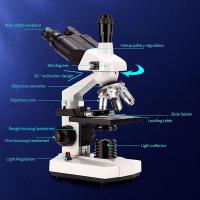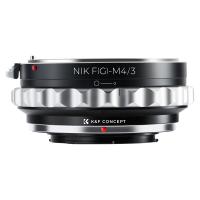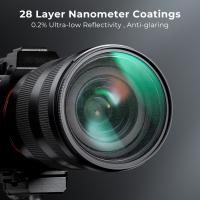What Supports The Slide On A Microscope ?
The slide on a microscope is typically supported by a stage, which is a flat platform that holds the slide in place. The stage usually has clips or clamps to secure the slide and prevent it from moving during observation. Additionally, the stage may have mechanical controls to move the slide horizontally or vertically, allowing for precise positioning of the specimen under the microscope's objective lens.
1、 Mechanical stage
The mechanical stage is a crucial component that supports the slide on a microscope. It is a platform that holds the slide in place and allows for precise movement and positioning. The mechanical stage typically consists of two main parts: the stage itself and the stage controls.
The stage is a flat platform where the slide is placed. It is usually made of metal or glass and has a hole or opening through which light can pass. The slide is secured onto the stage using clips or clamps to prevent it from moving during observation. The stage is designed to be sturdy and stable, ensuring that the slide remains in place even when the microscope is being adjusted or moved.
The stage controls are used to move the slide horizontally and vertically. These controls allow for precise positioning of the slide, enabling the user to focus on specific areas of interest. The horizontal movement is typically controlled by a set of knobs or wheels that move the stage left or right, while the vertical movement is controlled by another set of knobs that move the stage up or down.
The mechanical stage provides several advantages over a simple stage. It allows for more accurate and controlled movement of the slide, making it easier to navigate and explore the specimen. It also enables the user to easily return to a specific area of interest without losing focus or alignment. Additionally, the mechanical stage is often equipped with measurement scales or grids, allowing for precise measurements and observations.
In recent years, advancements in technology have led to the development of motorized or automated mechanical stages. These stages can be controlled electronically, allowing for even more precise and automated movement of the slide. This technology has greatly improved the efficiency and accuracy of microscopic observations, making it easier for researchers and scientists to study and analyze specimens.
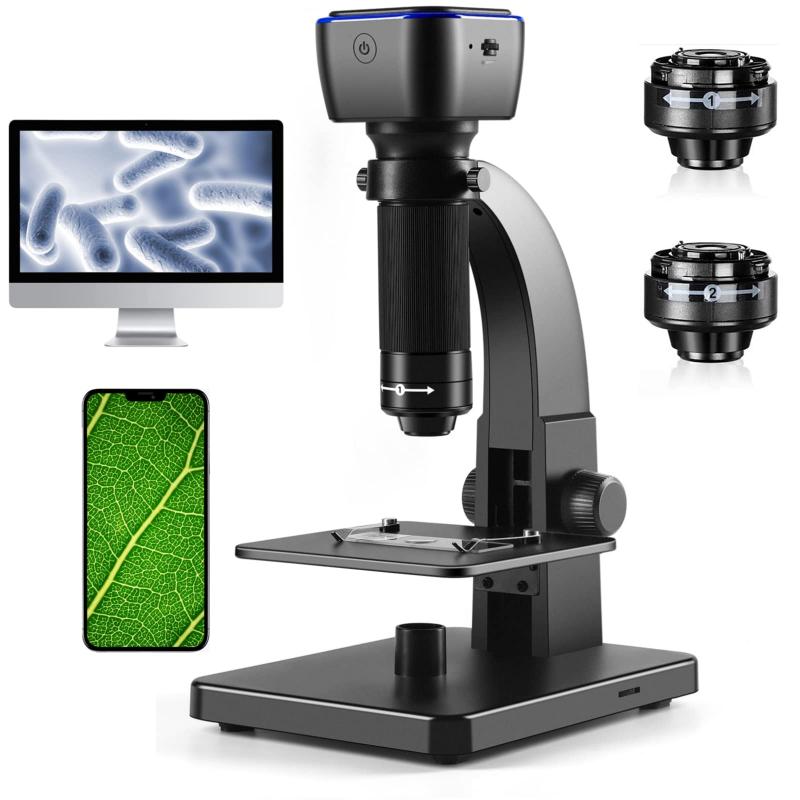
2、 Coarse and fine focus knobs
The slide on a microscope is supported by various components, including the coarse and fine focus knobs. These knobs are an essential part of the microscope's focusing mechanism and play a crucial role in adjusting the position of the slide to achieve a clear and magnified image.
The coarse focus knob is typically larger and located on the side or bottom of the microscope. It allows for rapid movement of the stage up and down, bringing the slide closer to or further away from the objective lens. This initial adjustment helps in roughly focusing the specimen on the slide.
On the other hand, the fine focus knob is usually smaller and more precise. It allows for delicate and minute adjustments to the position of the slide. By turning the fine focus knob, the user can achieve a sharper and more detailed image of the specimen. This knob is particularly useful when working with high magnification objectives, where even the slightest movement can significantly impact the focus.
In addition to the coarse and fine focus knobs, other components also support the slide on a microscope. These include the stage, which holds the slide in place, and the mechanical stage controls, which allow for precise movement of the slide in both the x and y directions. The condenser, located beneath the stage, helps in focusing the light onto the slide, enhancing the clarity of the image.
Overall, the coarse and fine focus knobs, along with other supporting components, work together to ensure that the slide is properly positioned and focused, enabling users to observe and study microscopic specimens with accuracy and clarity.
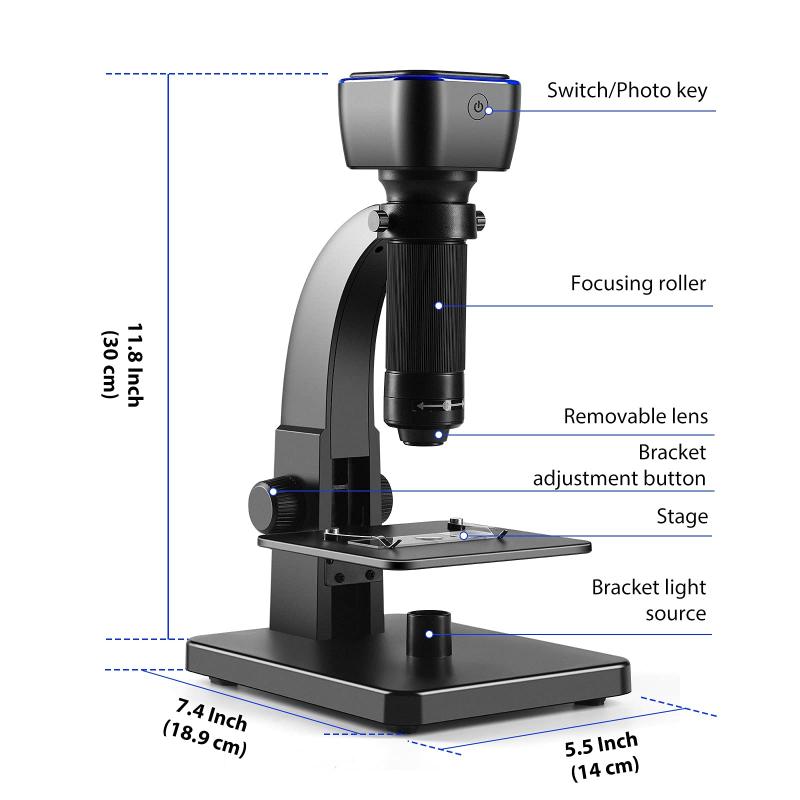
3、 Stage clips or slide holder
The stage clips or slide holder are the components that support the slide on a microscope. These are typically located on the stage, which is the flat platform where the slide is placed for observation. The purpose of the stage clips or slide holder is to securely hold the slide in place, ensuring that it remains stable during the examination.
Stage clips are small metal clips that can be tightened or loosened to hold the slide firmly in position. They are usually located on the sides of the stage and can be adjusted to accommodate different sizes of slides. The clips are designed to prevent the slide from moving or shifting while the microscope is in use, allowing for accurate and precise observation.
Alternatively, some microscopes may have a slide holder instead of stage clips. The slide holder is a built-in mechanism that securely holds the slide in place without the need for manual adjustment. It typically consists of two metal arms that gently grip the slide, providing stability and preventing any movement during examination.
Both stage clips and slide holders are essential components of a microscope as they ensure that the slide remains in the correct position for observation. Without these supports, the slide may shift or move, resulting in blurry or inaccurate images. Therefore, the stage clips or slide holder play a crucial role in facilitating clear and precise microscopic examination.
It is worth noting that advancements in microscope technology have led to the development of motorized stages, which can automatically move the slide for scanning or imaging purposes. These motorized stages often incorporate advanced slide holders that provide even greater stability and precision during examination.

4、 Condenser and iris diaphragm
The condenser and iris diaphragm are two essential components that support the slide on a microscope. The condenser is located beneath the stage and is responsible for focusing and directing the light onto the slide. It consists of a series of lenses that help to concentrate the light onto the specimen, enhancing the clarity and resolution of the image. The condenser can be adjusted to control the amount of light that passes through the slide, allowing for optimal illumination.
The iris diaphragm, on the other hand, is located within the condenser and functions as a variable aperture. It consists of a series of overlapping metal blades that can be adjusted to control the diameter of the opening. By adjusting the iris diaphragm, the amount of light passing through the slide can be further controlled, allowing for precise illumination and contrast enhancement.
Together, the condenser and iris diaphragm work in tandem to support the slide on a microscope. They ensure that the specimen is properly illuminated, allowing for clear and detailed observation. Without these components, the image quality would be compromised, making it difficult to visualize the specimen accurately.
It is worth noting that advancements in microscope technology have led to the development of more sophisticated condensers and iris diaphragms. For instance, some modern microscopes feature adjustable condensers with additional features such as phase contrast or darkfield illumination. These advancements have further improved the quality and versatility of microscope imaging, allowing for more detailed and precise observations.



